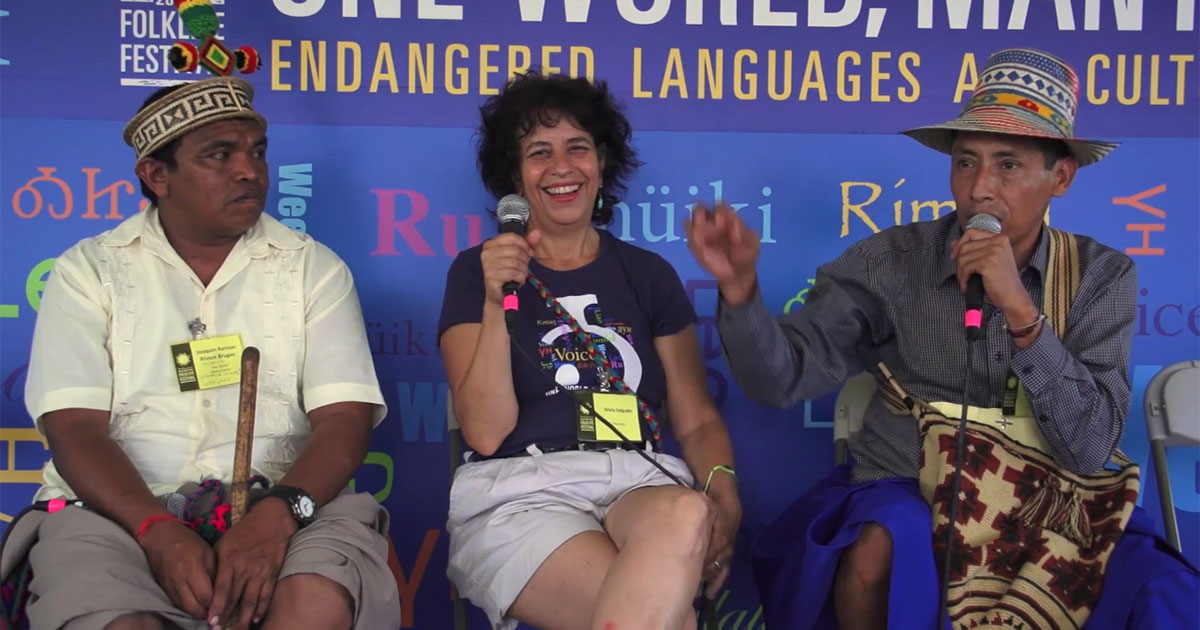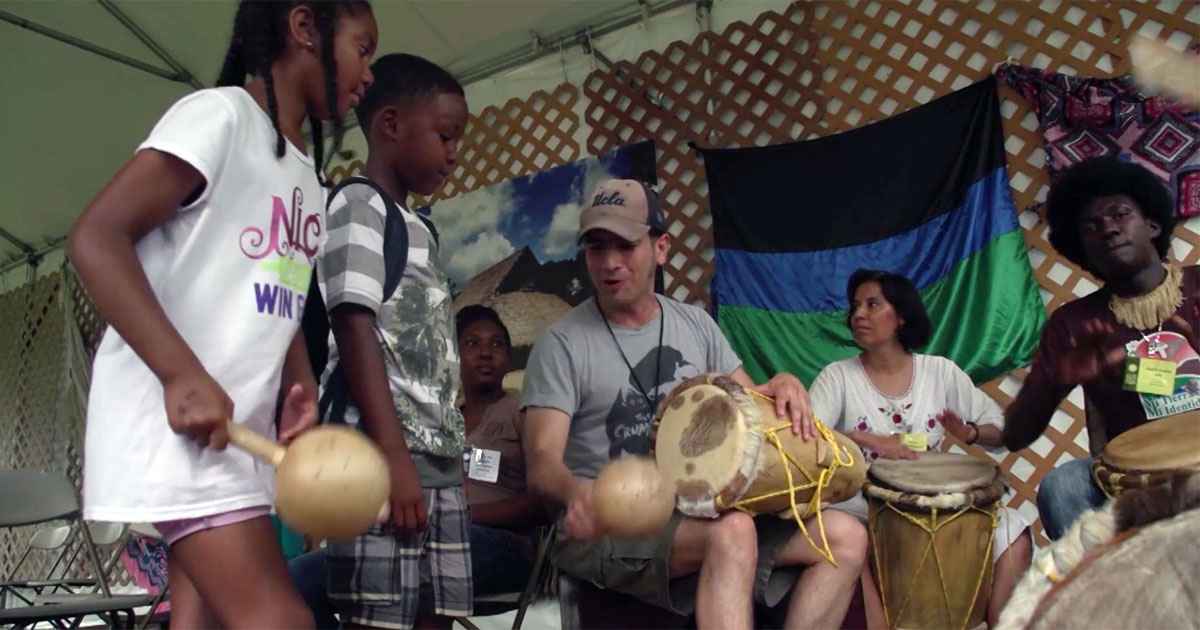





Linguistic Diversity in Colombia: Many Voices, Cultural Resistance, and a National Priority
— Gabino Hernandez Palomino, Colombia
Colombia is home to a rich tapestry of languages. In addition to Spanish, there are 68 native languages, spoken by about 850,000 people. They belong to three categories: indigenous languages, spoken by the original inhabitants of the national territory; Creole languages, born in the midst of cultural contact during the slave trade, and spoken by the Raizal, Palenquero, and Afro-Colombian peoples; and the Romani language, spoken by Roma communities of Indo-European origin. A national Law of Native Languages, approved in 2010, protects this linguistic and cultural diversity.
Arhuaco
The Arhuaco live near the perpetual snows of the Sierra Nevada of Santa Marta, in the northern part of Colombia. Arhuacos view themselves as “Older Brothers,” looking after the world and protecting nature. Their language, linked to the Chibcha linguistic family, is considered stable but in danger according to UNESCO’s Language Vitality Index. Ritual specialists, called Mamos, are charged with knowledge of traditional healing and customs. They use a different, sacred, language during their ceremonies.
Wayuunaiki
The Wayuu live in the Department of the Guajira, in the northern deserts of Colombia. The Wayuunaiki language belongs to the Arawak linguistic family, and is considered to be stable, but in danger because many of the younger members of the community do not speak it. The Wayuu traditional system of law, justice, and conflict mediation, based on the use of the Wayuunaiki language by expert orators (palabreros), was made part of UNESCO’s Representative List of the Intangible Cultural Heritage of Humanity.

Kamentzá
The Kamentzá live mainly in the Colombian department of Putumayo, located in the southwestern rainforests of the country. Their language is considered to be isolated and unique because it does not have any link to another linguistic family. It is recognized as endangered because younger generations are not learning it from their elders. Through poetry, storytelling, crafts, and other traditions, members of the Kamentzá community are striving to preserve their language and rich cultural heritage.
Uitoto
The Uitoto inhabit the Amazon region, in the southern rainforests of the country. They build longhouses called malocas, which serve as centers for community ceremonies where elders transmit traditional knowledge. Their language has several dialectal varieties, including Bue, Mika, Nipode and Minika, yet speakers of each dialect can understand each other quite easily.
Ri Palenge
The Palenqueros inhabit the town of San Basilio de Palenque, in the northern tropical dry forests of the Department of Bolívar, Colombia. Their mother tongue, considered to be seriously in danger, is a unique Creole language built of Spanish words and elements of the African Bantu linguistic family. It came about as a way of communication among African cimarrones, fiercely independent escaped slaves, who founded the first free community of Black people in South America.
Gabino Hernandez Palomino, Colombia
This presentation was made possible by the Embassy of Colombia in Washington, D.C., the Ministry of Culture of Colombia, and the Caro y Cuervo Institute.

Festival Participants:
Arhuaco
Ati Janey (Johana Marcela) Mestre Izquierdo, poet, storyteller, basket and mochila weaver
Kamentzá
Hugo Jesús Jamioy Juagibioy, poet, storyteller
Ri Palenge
Élida Cañate Díaz, dancer, traditional hairstylist
María del Transito Hernández Cabarcas, dancer, traditional hairstylist
Andris Padilla Julio, drummer
Uitoto
Calixto Kuiru, dancer, maloca builder
Wayuunaiki
Mónica López Pushaina, dancer
Joaquín Ramó'n Prince Bruges, traditional game expert
Benito Pushaina Apshana, traditional game expert and ojuunajirawa wrestler
Luis Misael Socarrás Ipuana, palabrero-expert in the Wayuu system of oratory conflict resolution
Marciano Urrariyú Gouriyu, dancer, musician, traditional game expert

